As an editor, I’ve helped authors market their books on a variety of levels. I’ve suggested minor changes to a work to better address or capture the target audience; I’ve sought out and helped craft author interviews, blog posts, and influencer marketing; and I’ve worked with authors to create engaging copy for their social media and book blurbs, selling directly to potential readers. If there’s one thing that’s been core to all those endeavors, one thing I’ve needed to understand more completely than any other aspect of a book, it’s the journey.
Whether you have help with your marketing or not, the same will be true for you. Unfortunately, it’s easy to miss this fact and embark on your marketing without considering the one thing that’ll make it most effective. Fear not, though, because in this article, I’ll be looking at how you can identify your book’s journey and how you can use it best when selling your work.
Your book as a product
Books are many things, and they fulfill many roles in our lives. In marketing, however, it’s useful to consider books as products. Many authors struggle with this, feeling that bringing in commerce invalidates their art, but the two aren’t mutually exclusive.
As products, books provide an emotional experience. They offer up ideas, but rather than stating them dryly, they turn those ideas into a narrative that delivers them in an engaging, imaginative way. People buy books in a deliberate attempt to access this process. It’s a profound purpose, but in terms of marketing, it’s really no different from any other product.
Marketing your book means understanding it as a product.Click To TweetSimple products, such as burgers, tend to be sold as the best at fulfilling their function. ‘This burger tastes the best’, says the marketing. This is true of books, but it’s not the only thing going on.
Laptops, for example, tend to be marketed first according to their specialization, then by quality. ‘This laptop is for you if you need something portable/good for games/good for work, and is the most effective product in that category (within a certain budget).’
Books are like this latter type of product, but with an almost infinite array of specializations. A potential reader is looking for a book that promises a very specific type of emotional experience – the job of good marketing isn’t to get as many people as possible to try your book (a legion of disappointed readers won’t do you any good), but to light it up like a beacon to those who are looking for the product you’re able to offer.
Book marketing, then, is primarily about how your book makes the reader feel. Genre and setting matter, but mostly because readers understand that these are markers of books that work for them and are likely to be successful in delivering the key emotional experience they’re looking for, whether that be excitement, joy, fear, or reflection.
So books are tools we use to bring about an emotional experience. That’s all well and good, and it’s a key tenet of book marketing, but it’s not the whole story. That emotional experience, after all, isn’t a static product.
So what is the journey, anyway?
It takes a reasonable amount of time to ‘use’ a piece of writing – to read it to completion – and the piece isn’t generally considered finished until you’ve reached the end. Despite this, you’ll have an emotional reaction as you read, and it may be a reaction that doesn’t quite describe the book as a whole – maybe you’re reading the funniest part of a melancholy book, or you’re still hoping a tragedy is going to turn out alright.
This becomes more than an academic problem when we consider the book as a product. If the book is a tool for creating an emotional experience, then there needs to be a way of communicating that experience as being both the sum of its parts and a definable whole. This is where the idea of the ‘journey’ comes into play.
Consider what it’s like to read (not just finish) your book.Click To TweetYour book’s journey doesn’t just consider the type of book it is, but the book as a process – it identifies how the reader will/should be made to feel by the book while acknowledging how they’ll get there. This may sound basic, but more often than not, it’s something that’s paid lip-service instead of being implemented effectively.
Effectively communicating your book’s journey
The journey fulfills two primary functions in terms of selling your book. First, it’s the best way for a reader to identify that your product is for them. Second, it puts them into a headspace where they can see themselves reading the book – it makes them understand what it would be like to use the product, not just what it can do for them.
Consider vacuum cleaner marketing, for example. Note how advertisements stress ease-of-use – how the vacuum corners better than any other, how it’s easier to empty. This is all about the journey of use rather than the end-function, and it’s an effective tactic.
Many authors can’t get past the end-function, describing how their book will ‘change the way you think about ______’ or ‘redefine ______ for the next generation’. This is part of a general trend towards extremity – ‘this is the funniest/scariest/most heartwarming book on the market’, ‘it’s a unique way of looking at an established genre’, ‘it deserves a spot on the pantheon of household names’, etc.
That might convince some readers that they’re holding an unparalleled work of genius, but it won’t convince many, and it’ll take a lot of work. Easier and more widely effective is to promise that the reading experience, the journey through the book, will be enjoyable.
The most effective piece of book marketing I’ve ever seen was a staff review card for The Wolf Wilder, recommending it as a book that readers would pull out every Christmas, creating a new tradition. In the same vein was another staff recommendation which guaranteed that a book was so funny, readers would be unable to resist elbowing their friends to read out choice quotes. These reviews were effective because they told a story about the journey of reading each book, presenting the reader with a narrative that they wanted to be a part of.
Tell the reader a story about what it’ll be like to read your book.Click To TweetThis should definitely be part of your approach when writing a blurb or giving an account of your book in interviews and online content, but you should also allow it to filter into other choices. For instance, if you have a choice of reviews, or are trying to choose a single quote from a review to share, pick out those which address the journey. Below are a few quotes chosen for books covers, each of which describes (in varying degrees of subtlety) the intended journey of reading:
Moving, vivid and terrifying. I only hope it’s not prophetic.
– Conor Cruise O’Brien on The Handmaid’s Tale
Welsh’s jet-black comedy at once entertains and appalls… gloriously grotesque.
– Esquire on Filth
Although many will find something offensive in this novel… they will find it simply impossible not to laugh.
– Booklist on Lamb
Notice how each writer employs the present tense, and the practice of trying to pile multiple adjectives into a single sentiment. This isn’t laziness, but an attempt to communicate that the book is many things at once – that it’s not a single experience, but a journey. The first quote even uses the word ‘vivid’, insisting on the reading experience as something immediate and insistent.
Esquire’s quote for Filth shows the value of tense – ‘you’ll be entertained and appalled’ lacks the immediacy of their chosen wording – and Booklist even offers a chronological experience; you’ll find something offensive, but then you’ll laugh. Intentional or not, even Conor Cruise O’Brien’s choice of ‘moving’ is part of the language of progression.
Marketing is a complex business, but these techniques do work. There’s been a lot of theory so far, so here are a few simple tips to help you communicate your book’s journey:
- Focus on the experience of reading rather than the experience of having read – your reader wants to know how they’ll feel as they read, not what they’ll think and feel once the story is over.
- Where possible, phrase things in the present tense.
- Use close, three-part adjective lists to suggest a progression from one state of mind to the next.
- Communicate a story about reading your book that the reader wants to be a part of.
So that’s why your book’s journey is so important, and some of the ways you can communicate it to potential readers, but how can you uncover what your journey is in the first place?
Discovering your book’s journey
Again, this sounds simple, but it’s easy to miss the point or get lost in the minutiae. One thing many people forget when defining their book’s journey is where the reader starts. A journey, after all, is travel from one place, through others, to a destination. Your book might uplift or inform, but this is only possible if it makes the reader happier than before or tells them something they didn’t know – it matters where they started.
Your book may do many things, it may offer a whole range of emotional developments, but its journey’s foundation is the emotional experience that most drastically shifts the reader from one state to another.
Often, authors get caught up in genre, and instead of describing the journey they’re really offering, they start describing what they think a reader of that genre might want. Action gets over-inflated when, actually, the story is more about getting to know the characters. Wonder and novelty get top-billing (especially in fantasy), despite the fact that the story itself is mostly swashbuckling fun. Remember, your marketing should be geared at finding people who will enjoy your work, not just persuading as many as possible to give it a try. That’s not a bad secondary goal, but make sure you’re being honest about what readers can expect from their experience.
Discovering the journey of your book can vary in difficulty, depending on its complexity and subject matter, but here’s an easy three-step approach to get you started:
- Think about where your reader starts and what you want them to feel over the course of your book. If you’re writing for a genre audience, are you really going to offer them a brand new take, or would it be better to foreground a different experience?
- Once you’ve got a better idea of where you’re taking the reader, try to divide that journey into primary and secondary experiences. Is your book humorous in its approach to something sad? Well, it sounds like your primary journey is one of rumination and thoughtfulness, with a secondary streak of humor. Represent this balance in the descriptive language you choose, and ensure the primary journey gets the lion’s share of the language.
- Having defined your journey, consider the type of person who might want to go on it. Is your marketing targeting them, whether that be in placement, language, or approach? Think about the story that person wants to be a part of.
This third point is important, because it’s one authors often neglect. Many fantasy and sci-fi stories claim they’re totally unique, but experienced genre fans want to feel like they’re well-versed. Sure, if there’s something unique, they want to read it, but they’re unlikely to believe that a random book is offering something truly unprecedented. More effective is to suggest that this is a book for the consummate fan – something a well-read fan of the genre should have on their shelf.
Pitch your marketing to an identified audience, both in wording and placement. Click To TweetOn the other hand, if you’re selling edgy humor, it can often be beneficial to skirt close to warning the reader off your book, challenging them to prove that nothing’s too edgy for their tastes. This is the case in the reviews for Filth and Lamb; the reviewer describing a journey where the reader overcomes any apparent moral qualms to enjoy the book. This is a journey that each book’s target audience wants to go on.
Journey’s end
Defining your journey might be hard, but it shouldn’t be impossible. Good fiction is written for the reader, which means there should be a definite emotional experience on offer. If you can’t find one, it may be that you need to re-plot or cut elements of your story to craft a consistent, enjoyable reading experience.
If, however, you can find a journey in your story, a trip from one point to another that a person might want to take, then you’ve discovered the backbone of any marketing campaign, large or small. Your journey needs to be clear in your blurb, in your influencer marketing, in your social media campaign, in your emails, and maybe even in your book design. It’ll also be important when pitching to agents or publishers, who are going to be particularly conscious of the book as a product. The clearer you can make your journey, the better, and if you can boil it down to three points, suggesting an intermingling of connected experiences, then you’ve hit the jackpot.
If you want to know more about your book’s journey, check out Is Now The Time For An Alpha Reader? for a great way of getting an outside opinion. Or, if you’re not sure how to implement your journey into a book blurb, try Trade Secrets: Your Confidential Guide To The Perfect Book Blurb. Or, if you’d rather discuss the journey itself, get in touch in the comments below!

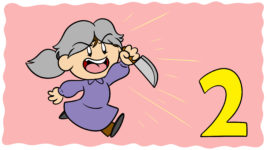
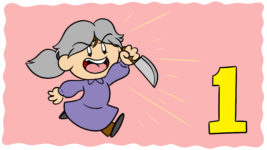
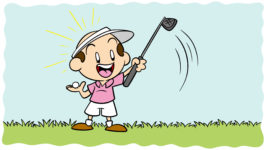
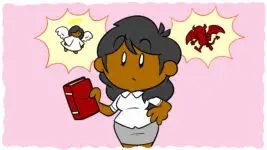
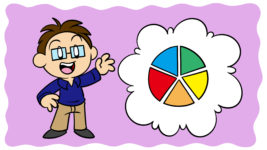
6 thoughts on “Your Book’s Journey Is The Secret Ingredient To Amazing Marketing”
Thanks, Rob, you have written a gold mine of good advice and practical advice. I have only one question: where is the Print button ?
Hi Jim,
My pleasure – I’m glad you found it so useful. You should be able to print the article by right-clicking the page and selecting ‘Print’.
Best,
Rob
Yes, Print works great in IE, but not Firefox which is my regular browser. I need to remember this. Thanks, Rob.
I stand corrected. In Firefox, under File is the Print option.
Great food for thought. I’m a non-fiction writer but your principles would apply just as well there!
Hi Sally,
Thanks very much, and I agree entirely. Non-fiction authors still consider the presentation of their words and the chronology of how their book unfolds, making the journey just as applicable to their writing. There’s an argument that the journey is even more important here, since there’s more chance that they’ll have to compete with books which deal with the same subject, leaving the experience as the unique selling point of their product.
Best,
Rob